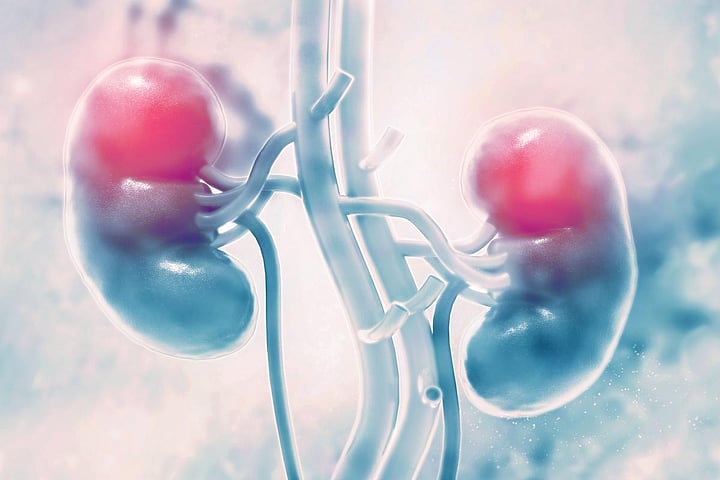糖尿病性腎症の世界疾病負荷、1990~2021年にかけて増大
2050年まで増大が続く見込み、社会人口統計学的特性指数との関連あり
The Third People's Hospital of Chengdu(中国)のXiao Ma氏らは、世界疾病負荷研究に基づき、1990~2021年のデータを使用して、1型および2型の糖尿病に起因する慢性腎臓病(CKD)の世界的な負荷の動向および今後の予測について分析した。推定年間変化率(EAPC)を用いて、疾病サブタイプ別および地域別の疾病負荷の動向を推定した。
解析の結果、糖尿病性腎症の疾病負荷およびそのEAPCは、世界の国別および地域別の社会人口統計学的特性指数(SDI)サブグループによって、大幅に異なっていた。また、さまざまな年齢集団や代謝因子が糖尿病性腎症の疾病負荷に及ぼす影響にも、大きなばらつきが見られた。代謝因子が加齢に伴う死亡者数や死亡率に及ぼす影響には、正の相関が認められた。1型糖尿病によるCKDと2型糖尿病によるCKDの死亡率には、異なる代謝因子が異なる影響を及ぼしていた。糖尿病性腎症の世界的な負荷は、自己回帰和分移動平均(ARIMA)モデルに基づく予測では、治療介入を行わなければ2022~2050年にかけて増大が続くとされた。
著者らは、「治療介入を行わない場合、糖尿病性腎症の世界的な負荷は2022~2050年にかけて年々増大し、将来、世界全体の医療システムをさらに圧迫することになるだろう」と述べている。


1990 to 2021 Saw Increase in Global Burden of Diabetic Nephropathy
Burden is projected to continue increasing through 2050, and is related to sociodemographic index
MONDAY, March 17, 2025 (HealthDay News) -- The global burden of diabetic nephropathy increased from 1990 to 2021, and is projected to continue increasing to 2050, according to a study published online Feb. 21 in Frontiers in Endocrinology.
Xiao Ma, from The Third People's Hospital of Chengdu in China, and colleagues used data from 1990 to 2021 to analyze the trends and future projections of the worldwide burden of chronic kidney disease (CKD) caused by type 1 and type 2 diabetes mellitus based on the Global Burden of Disease Study. Trends in the burden of each disease subtype and different regions were calculated using Estimated Annual Percentage Changes (EAPCs).
The researchers found that the burden of diabetic nephropathy and its EAPCs varied significantly across different sociodemographic index subgroups of countries and regions worldwide. There was also significant variability seen in the influence of different age groups and metabolic factors on the burden of diabetic nephropathy. There was a positive correlation observed for the effects of metabolic factors on the number of deaths and mortality with age. Different metabolic factors have different effects on the mortality of CKD due to type 1 diabetes and CKD due to type 2 diabetes. The global burden of diabetic nephropathy is predicted to continue increasing in the absence of interventions from 2022 t0 2050 based on the ARIMA (Autoregressive Integrated Moving Average) model.
"In the absence of interventions, the global burden of diabetic nephropathy is projected to continue to rise annually from 2022 to 2050, placing even greater stress on the global health system in the future," the authors write.


